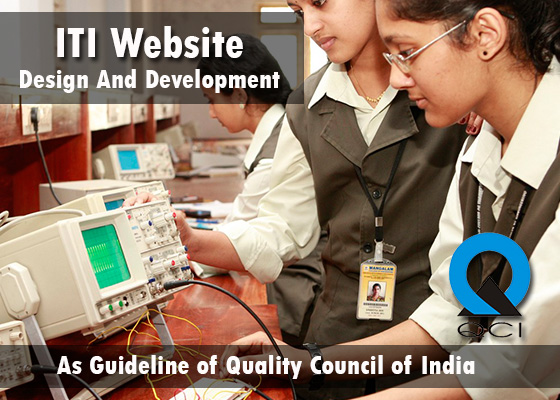Government Industrial Training Institute Suratgarh

Welcome to Government Industrial Training Institute Suratgarh. Established on 01-Aug-1996., Government Industrial Training Institute Suratgarh is a premier Industrial Training Institute located in Ganganagar, Rajasthan. Our ITI is dedicated to providing high-quality technical education and skill development in the field of ITI, empowering students with the necessary knowledge and expertise to excel in their careers.
Established on 01-Aug-1996, Government Industrial Training Institute Suratgarh is a recognized Government ITI Industrial Training Institute situated in Ganganagar, Rajasthan. At Government Industrial Training Institute Suratgarh is dedicated to providing quality vocational education and skill development training in the ITI trade, helping students build a strong foundation for a successful career in the technical field.
We are committed to empowering youth through industry-relevant training and hands-on experience, fostering employability and self-reliance.
Our Mission
At Government Industrial Training Institute Suratgarh, we aim to bridge the gap between academic learning and industry requirements by imparting hands-on training, modern technical knowledge, and practical skills. Our mission is to nurture skilled professionals who can contribute effectively to the workforce and enhance the industrial growth of the nation.
- To deliver quality technical education and practical training.
- To develop skilled, confident, and responsible professionals.
- To foster an environment of learning, innovation, and personal growth.
- To bridge the gap between education and employment by aligning with industry standards.
Our Vision
To become a center of excellence in vocational training, providing skill-based education that meets the demands of today’s industries and contributes to the development of society.
Why Choose Us?
- Government Recognized – Our institute is approved under ITI code GR08000110, ensuring a structured and certified training curriculum.
- Quality Training – We focus on both theoretical knowledge and practical applications to provide industry-relevant training.
- Experienced Faculty – Our team of skilled instructors is dedicated to guiding students toward technical excellence.
- Well-Equipped Infrastructure – We provide modern labs and workshops with state-of-the-art equipment for hands-on learning.
- Career-Oriented Approach – Our training ensures that students are job-ready and well-prepared for opportunities in the electrical industry.
Course Offered
- Duration: As per ITI guidelines
- Curriculum: Covering electrical fundamentals, wiring, safety protocols, installation, and maintenance
Contact Us
For any inquiries or admission-related information, feel free to reach out to us:
Contact No: 01509-220029
E-mail: [node:field_e_mail]
Address: Suratgarh, Ganganagar
Join us at ITI, and take the first step towards a bright and successful career in the electrical industry!
Join Us
At GR08000110, we believe in transforming potential into expertise. Join us to acquire skills that empower you to excel in the dynamic world of electrical technology.
Government ITI
Government ITI is leading educational organisatin in india. Teching facualty of Government ITI is suprimo. ITI is providing latest Job oriened cource for student. This Government ITI is powerd by 'Ministry of Skill Development and Entrepreneurship, Government of India for Craftsmen Training Scheme .
Rajasthan
Rajasthan was the first State in India to establish the Mission on Livelihoods, in September 2004, under the chairmanship of the Hon’ble Chief Minister in order to address the challenges of unemployment and ensuring gainful and sustainable employment. The objective of creation of RMoL was to formulate appropriate and innovative strategies to promote and facilitate large scale livelihoods for the poor and vulnerable people.
Computer Operator and Programming Assistant (COPA)
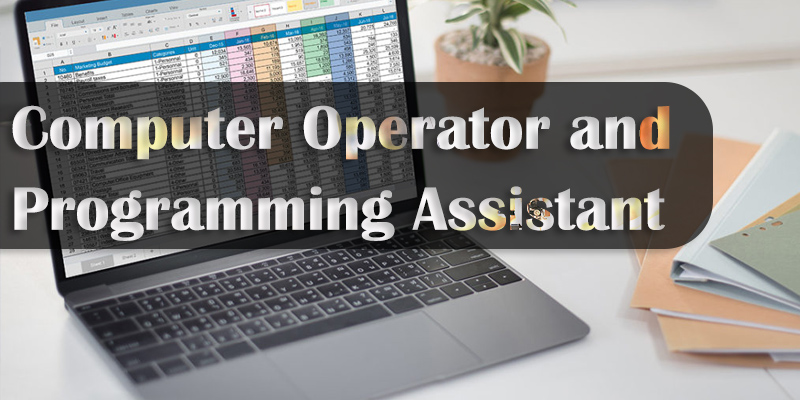
ITI trade Computer Operator and Programming Assistant (COPA) is powered by NCVT. ITI trade Computer Operator and Programming Assistant (COPA) is a job oriented trade ITI trade Computer Operator and Programming Assistant (COPA) is suitable for government job and private job. This ITI trade Computer Operator and Programming Assistant (COPA) is very powerful for self-empowerment. This ITI trade Computer Operator and Programming Assistant (COPA) is perfectly design to fulfill industrial requirement of Indian Industries as well as International industries.
The individual can work as both Computer Operator/ Programming Assistant; operates computer and peripheral equipment to process business, scientific, engineering, or other data, according to operating instructions. As programming assistant installs, maintains and updates computer programs by making minor changes and adjustments to them under the guidance of computing professionals. Maintains and updates documents of computer programs and installations with assistance under supervision of supervisor
On successful completion of this course the candidates shall be gainfully employed as:
- Computer Operator
- Programming Assistant
Cosmetology
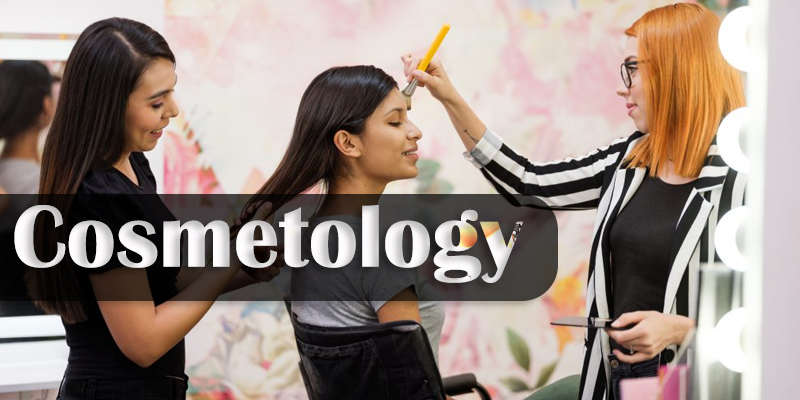
During one-year duration of ‘Cosmetology’ trade, a candidate is trained on Professional Skill, Professional Knowledge and Employability Skill related to job role. In addition to this, a candidate is entrusted to undertake project work, extracurricular activities and on-the-job training to build up confidence. The broad components covered under Professional Skill subject are as below:
During one-year duration of ‘Cosmetology’ trade, a candidate is trained on Professional Skill, Professional Knowledge and Employability Skill related to job role. In addition to this, a candidate is entrusted to undertake project work, extracurricular activities and on-the-job training to build up confidence. The broad components covered under Professional Skill subject are as below:
The learner learns to illustrate and explain structure of hair; create basic haircuts using special cutting techniques; demonstrate basic yogic exercises for stamina building and correcting body posture; demonstrate day, evening, party & bridal makeup and explain effects of light on makeup. He/she learns to create traditional hair styles & hair designing with artificial aids and thermal gadgets; demonstrate hair colouring, perming, straightening, rebonding & smoothing. Also, the trainee is able to explain the knowledge of bonds; create bindi, heena & tattoo designing, drape saree in different styles and demonstrate asanas for spine stretching, stress management & common body ailments after completion of this course.
TRAINING SYSTEM
The Directorate General of Training (DGT) under Ministry of Skill Development & Entrepreneurship offers a range of vocational training courses catering to the need of different sectors of economy/ Labour market. The vocational training programmes are delivered under the aegis of Directorate General of Training (DGT). Craftsman Training Scheme (CTS) with variants and Apprenticeship Training Scheme (ATS) are two pioneer schemes of DGT for strengthening vocational training.
Cosmetology trade under CTS is one of the popular courses delivered nationwide through a network of ITIs. The course is of one-year duration. It mainly consists of Domain area and Core area. The Domain area (Trade Theory & Practical) imparts professional skills and knowledge, while the core area (Employability Skill) imparts requisite core skills, knowledge, and life skills. After passing out the training program, the trainee is awarded National Trade Certificate (NTC) by DGT which is recognized worldwide.
Candidates broadly need to demonstrate that they are able to:
- Read and interpret technical parameters/documents, plan and organize work processes, identify necessary materials and tools;
- Perform tasks with due consideration to safety rules, accident prevention regulations and environmental protection stipulations;
- Apply professional skill, knowledge & employability skills while performing jobs.
- Document the technical parameters related to the task undertaken.
JOB ROLE
Skin Care Specialist; provides skin care treatments to face and body to enhance an individual's appearance. Advises clients about colors and types of make-up and instruct them in make-up application techniques. Applies chemical peels in order to reduce fine lines and age spots. Cleanses clients’ skin with water, creams and/or lotions. Demonstrates how to clean and care for skin properly and recommend skin-care regimens. Determines which products or colors will improve clients' skin quality and appearance. Examines clients' skin, using magnifying lamps or visors when necessary, in order to evaluate skin condition and appearance. Keeps records of client needs and preferences, and the services provided. Performs simple extractions to remove blackheads. Removes body and facial hair by applying wax. Selects and applies cosmetic products such as creams, lotions, and tonics.
Beautician; gives various forms of beauty treatment to clients. Examines clients’ skin and suggests suitable treatment. Applies lotions, creams and packs to stimulate circulation, lubricate tissues and remove wrinkles and lines. Massages face, neck, arms, legs or other parts of body and gives treatment for superficial skin blemishes. Removes superfluous hair by wax treatment or other method. Shapes, colors and otherwise treats eyebrows and eyelashes and applies cosmetics and advises on suitable make-up. May cut, comb and wave hair according to clients’ instructions or according to particular style, tint or dye hair, and give scalp treatment. May clean, shape and polish fingernails.
Assistant Beautician; needs to be aware of the basics of beauty therapy, health and hygiene, safety and needs to be knowledgeable about various beauty products. Assistant Beautician is expected to perform basic epilation, manicure, pedicure and basic face care services and also assist the beautician in providing advanced services. The person also assists in salon ambience maintenance and also does various other odd jobs in the salon including sell salon retail products after obtaining knowledge on them.
Beauticians and Related Workers, Others; Hairdressers, Barbers, Beauticians and Related Workers, other include all other hairdressers, barbers, beauticians and related workers not elsewhere classified.
Pedicurist and Manicurist; needs to be aware of the basics of pedicure and manicure, health and safety, hygiene and needs to be knowledgeable about various beauty products. The roleholder is expected to independently provide services of pedicure and manicure while performing some other assisting services.
Hairdresser (Ladies); cuts, washes, dyes and waves hair and performs other personal services incidental to hair dressing of women. Covers clothing of clients with towel or apron to avoid sticking of cut hair. Cuts hair according to instructions of client or according to a particular style using clippers, scissors, razors and combs. Washes, rinses and dries hair, using shampoos and solutions as necessary and bleaches, dyes or tints hair. Waves hair by wrapping it with round curlers, adding wave solutions and performing other tasks to obtain required effect. Sets hair in desired style by combing. May clean, shape and polish fingernails. May give scalp treatment to clients.
Hair Stylist; specializes in dressing hair according to latest style, period, or character portrayal, following instructions of patron MAKE-UP ARTIST, or script: Questions patron or reads instructions of MAKE-UP ARTIST or script to determine hairdressing requirements. Studies facial features of patron or performing artist and arranges, shapes, and trims hair to achieve desired effect, using fingers, combs, barber scissors, hair-waving solutions, hairpins, and other accessories. Dyes, tints, bleaches, or curls or waves hair as required. May create new style especially for patron. May clean and style wigs. May style hairpieces.
LEARNING OUTCOME
Learning outcomes are a reflection of total competencies of a trainee and assessment will be carried out as per the assessment criteria.
- 1. Develop good appearance and behaviour, practice tasks as per industry standard and express good communication skill following safety precautions.
- 2. Prepare and maintain work area and maintain health and safety at the workplace.
- 3. Carry out epilation and depilation services. Illustrate and explain hair structure & hair growth cycle.
- 4. Carry out manicure and pedicure services. Explain anatomy of nail. Differentiate and identify nail disease nail disorders.
- 5. Carry out facial treatments for common skin problems. Illustrate and explain skin structure.
- 6. Carry out hair treatment for common hair problems. Illustrate and explain structure of hair.
- 7. Create basic haircuts using special cutting techniques.
- 8. Demonstrate basic yogic exercises for stamina building and correcting body posture
- 9. Demonstrate day, evening, party & bridal makeup and explain effects of light on makeup.
- 10. Create traditional hair styles & hair designing with artificial aids and thermal gadgets.
- 11. Demonstrate hair colouring, perming, straightening, rebonding & smoothening. Explain the knowledge of bonds.
- 12. Create bindi, heena & temporary tattoo designing, drape saree in different styles.
Electrician
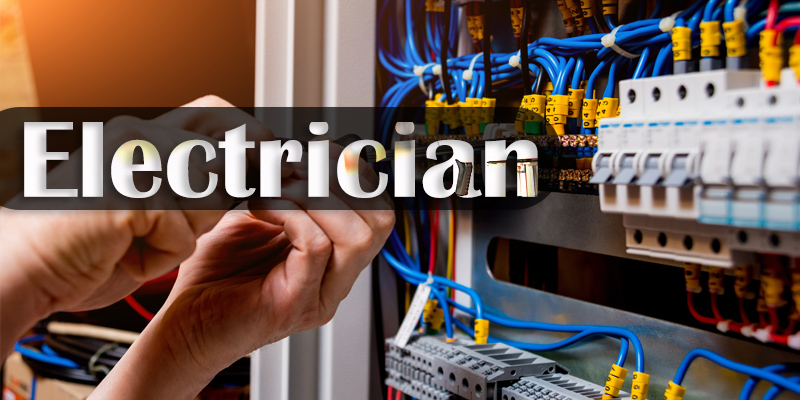
ITI trade Electrician is powered by NCVT. ITI trade Electrician is a job oriented trade ITI trade Electrician is suitable for government job and private job. This ITI trade Electrician is very powerful for self-empowerment. This ITI trade Electrician is perfectly design to fulfill industrial requirement of Indian Industries as well as International industries.
- Electricians have a wide scope of Employability ranging from self-employment, contractual employment to Industrial jobs.
- After successful completion of this course, Electricians can aspire to become Electrical Contractors by acquiring the ‘B” licence from the Electrical Licence Board.
- They can set up their own Rewinding and servicing of Domestic Equipment shop.
- Job opportunities are wide open in Defence, Railways, Transport, Ship Building, Electricity Board, various Industries etc
- They can also go for further higher studies after successful completion of course.
- Students who have completed this course have found employment in the following areas:
- Service/Maintenance Technician for domestic appliances in Reputed Companies
- Winder of Electrical Motors in winding shop
- Contractor for domestic wiring and industrial wiring
- Armature winder of Electrical fans and motors
- Electrical appliance repair in electrical shops
- Indian Railway (Asst. Driver, Tech. Gr. III, Appr. Technician)
- Local Electricity Board
- Assembler of Electrical control Gears
- Telephone Department
- Installation and Testing division of Auditorium and Cinema Hall
- Factories
- As Instructor in Govt./Private ITI/ITC
- Merchant Navy
- Indian Air Force
- Self-Employment in Service Centre
Fitter
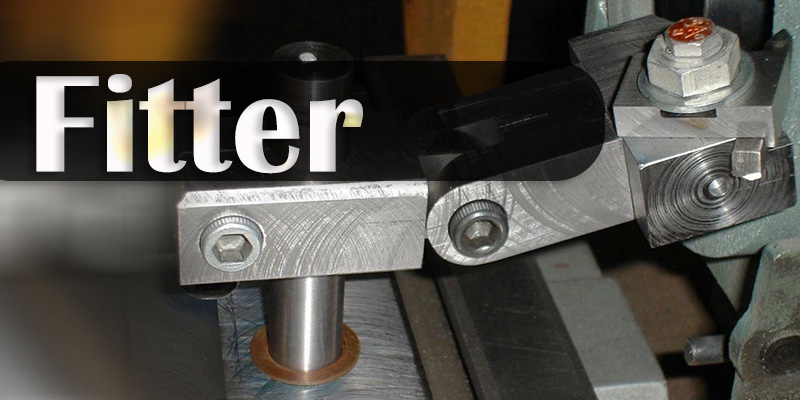
ITI trade Fitter is powered by NCVT. ITI trade Fitter is a job oriented trade ITI trade Fitter is suitable for government job and private job. This ITI trade Fitter is very powerful for self-empowerment. This ITI trade Fitter is perfectly design to fulfill industrial requirement of Indian Industries as well as International industries.
Fitters have a wide scope of Employability ranging from self-employment, contractual employment to Industrial jobs. On successful completion of this course, the candidates shall be gainfully employed in the following industries:
- Production & Manufacturing industries.
- Structural Fabrication like bridges, Roof structures, Building & construction.
- Automobile and allied industries
- Service industries like road transportation and Railways.
- Ship building and repair
- Infrastructure and defence organizations
- In public sector industries like BHEL, BEML, NTPC, etc and private industries in India & abroad.
- Self employment
International Comparability
- Existence of any official document suggesting the comparability of the qualification with the qualifications in other countries is not known.
- However, ITI passed out trainees are getting employment in many Gulf countries, European countries, Australia, New Zealand, Singapore etc.
Progression Pathway
- Can appear in 10+2 examination through National Institute of Open Schooling (NIOS) for acquiring higher secondary certificate and can go further for General/ Technical education
- Can take admission in diploma course in notified branches of Engineering by lateral entry
- Can join as semi-skilled worker in the industry and can become supervisor after doing part-time diploma in relevant branch of Engineering
- Can join Apprenticeship programme in different types of industries leading to National Apprenticeship certificate (NAC) after which they will be employed in industry as skilled worker and can become supervisor after doing part-time diploma in relevant branch of Engineering
- Can join Crafts Instructor Training Scheme (CITS) in the relevant trade after which they will be employed in ITI/ Vocational Training Institute as instructor
Mechanic (Tractor)
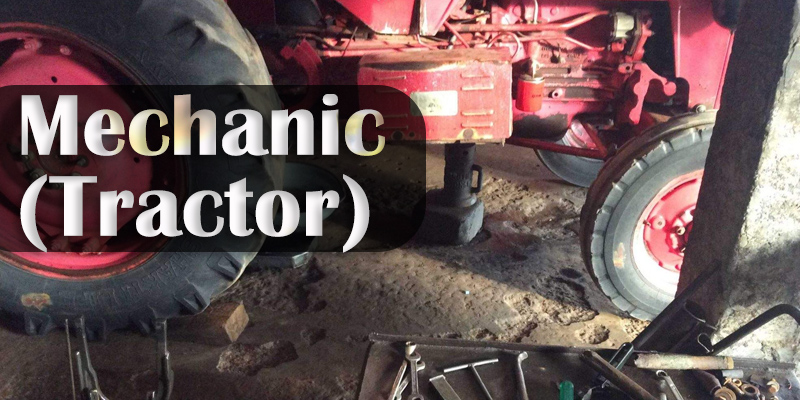
ITI trade Mechanic (Tractor) is powered by NCVT. ITI trade Mechanic (Tractor) is a job oriented trade ITI trade Mechanic (Tractor) is suitable for government job and private job. This ITI trade Mechanic (Tractor) is very powerful for self-empowerment. This ITI trade Mechanic (Tractor) is perfectly design to fulfill industrial requirement of Indian Industries as well as International industries.
The trainee attending the course on ‘Mechanic Tractor’ shall be able to perform basic fitting , grinding, surface finishing, sheet metal, bending, and welding operations and carry out electrical/electronic, nondestructive, and battery tests, in an tractor workshop. The trainee shall be able to service cooling and lubrication systems, intake and exhaust systems, and fuel feed system, of the tractor. The trainee shall also be able to overhaul diesel engine, clutch and gearbox, differential and PTO Unit, steering system, assemblies of power tiller, implements, and charging and starting systems, of the tractor.
Mechanic Tractor repairs and overhauls tractors by various mechanical processes for agriculture, constructional and other heavy duties
Trade Practical (27 Hrs/week)
Familiarisation with institute, Job opportunities in the automobile sector, Machinery used in Trade. Types of work done by the students in the shop floor.
Practical related to Safety and Health, Importance of maintenance and cleanliness of Workshop. Interaction with health centre and fire service station to provide demo on First aid and Fire safety, Use of fire extinguishers. Demonstration on safe handling and Periodic testing of lifting equipment, and Safety disposal of Used engine oil. Energy saving Tips of ITI electricity Usage
Practice using all marking aids, like steel rule with spring calipers, dividers, scriber, punches, Chisel etc., Layout a work piece- for line, circle, arcs and circles. Practice to measure a wheel base of a vehicle with measuring tape. Practice to measure valve spring tension using spring tension tester Practice to remove wheel lug nuts with use of an air impact wrench Practice on General workshop tools & power tools.
Measuring practice on Cam height, Camshaft Journal dia, crankshaft journal dia, Valve stem dia, piston diameter, and piston pin dia with outside Micrometers. Measuring practice on the height of the rotor of an oil pump from the surface of the housing or any other auto component measurement with depth micrometer. Measuring practice on valve spring free length. Measuring practice on cylinder bore, Connecting rod bore, inside diameter (ID) of a camshaft bearing with Telescope gauges. Measuring practice on cylinder bore for taper and out-of-round with Dial bore gauges. Measuring practice to measure wear on crankshaft end play, crankshaft run out, and valve guide with dial indicator. Measuring practice to check the flatness of the cylinder head is warped or twisted with straightedge is used with a feeler gauge. Measuring practice to check the end gap of a piston ring, piston-tocylinder wall clearance with feeler gauge. Practice to check engine manifold vacuum with vacuum gauge. Practice to check the air pressure inside the vehicle tires is maintained at the recommended setting
Practice on General cleaning, checking and use of nut, bolts, & studs etc., Removal of stud/bolt from blind hole. Practice on cutting tools like Hacksaw, file, chisel, Sharpening of Chisels, center punch, safety precautions while grinding. Practice on Hacksawing and filing to given dimensions.
Practice on Marking and Drilling clear and Blind Holes, Sharpening of Twist Drills Safety precautions to be observed while using a drilling machine. Practice on Tapping a Clear and Blind Hole, Selection of tape drill Size, use of Lubrication, Use of stud extractor. Cutting Threads on a Bolt/ Stud. Adjustment of two piece Die, Reaming a hole/ Bush to suit the given pin/ shaft, scraping a given machined surface.
Practice on making Rectangular Tray. Pipe bending, Fitting nipples unions in pipes. Soldering and Brazing of Pipes.
Practice in joining wires using soldering Iron, Construction of simple electrical circuits, Measuring of current, voltage and resistance using digital multimeter, practice continuity test for fuses, jumper wires, fusible links, circuit breakers.
Diagnose series, parallel, seriesparallel circuits using Ohm’s law, Check electrical circuit with a test lamp, perform voltage drop test in circuits using multimeter, measure current flow using multimeter /ammeter, use of service manual wiring diagram for troubleshooting.
Cleaning and topping up of a lead acid battery, Testing battery with hydrometer, Connecting battery to a charger for battery charging, Inspecting & testing a battery after charging, Measure and Diagnose the cause(s) of excessive Key-off battery drain (parasitic draw) and do corrective action. Testing of relay and solenoids and its circuit.
Identify and test power and signal connectors for continuity, Identify and test different type of Diodes, NPN & PNP Transistors for its functionality, Construct and test simple logic circuits OR, AND & NOT and Logic gates using switches.
Practice to make straight beads and Butt, Lap & T joints Manual Metal Arc Welding. Setting of Gas welding flames, practice to make a straight beads and joints Oxy – Acetylene welding Film on Heat treatment process
Practice on Liquid penetrant testing method and Magnetic particle testing method. Identification of Hydraulic and pneumatic components used in vehicle. Tracing of hydraulic circuit on hydraulic jack, hydraulic power steering, and Brake circuit. Identification of components in Air brake systems.
Welder (Pipe)
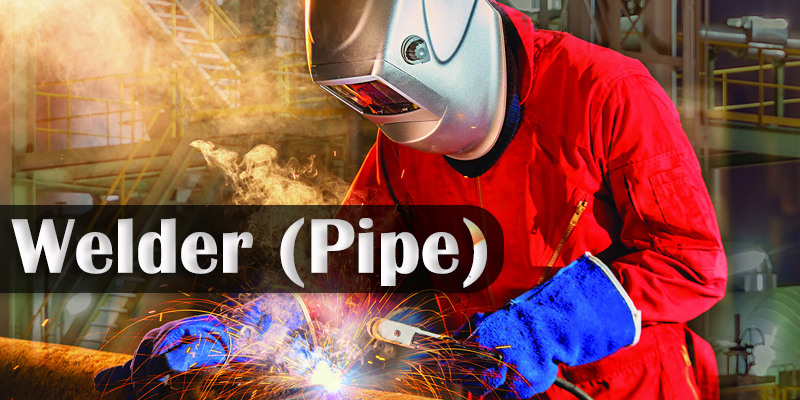
During the one-year duration of “Welder (Pipe)” trade, a candidate is trained on Professional Skill, Professional Knowledge, Engineering Drawing, Workshop Calculation & Science and Employability Skill related to job role. In addition to this, a candidate is entrusted to undertake project work, extracurricular activities and on-the-job training to build up confidence. The broad components covered under Professional Skill subject are as below:-
In the one-year duration, trainee learns about elementary first aid, firefighting, environment regulation and housekeeping etc. The practical part starts with basic pipe work viz. cutting of pipes, threading, joining, etc. Cutting Pipes in different angles, joining of pipes of different diameter and angles by gas welding, thread cutting on different types of pipes & fittings accessories. On completion of each job the trainees will also evaluate their jobs by visual inspection, and identify the defects for further correction/improvement. They learn to adapt precautionary measures such as preheating; maintaining inter-pass temperature and post weld heat treatment for Welding Alloy steel, Cast Iron etc. The Work Shop calculation taught will help them to plan and cut the required jobs economically without wasting the material and also used in estimating the Electrodes, filler metals etc. The Workshop Science taught will help them to understand the materials and properties, effect of alloying elements etc. Engineering Drawing taught will be applied while reading the job drawings and will be useful in understanding the location, type and size of weld to be carried out.
Professional Knowledge subject is simultaneously taught in the same fashion to apply cognitive knowledge while executing task. In addition, components like Physical properties of engineering materials, different types of iron, properties and uses, introduction to GTAW & GMAW, Heat & Temperature are also covered under theory part.In addition to above components the core skills components viz., Workshop calculation & science, Engineering drawing, employability skills are also covered. These core skills are essential skills which are necessary to perform the job in any given situation.



